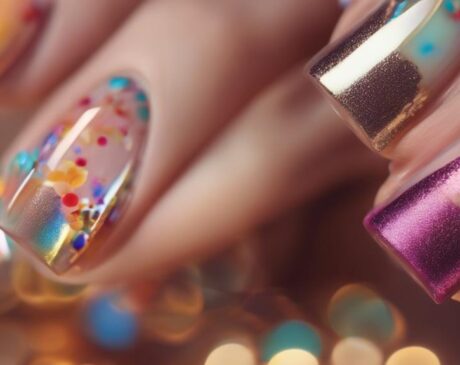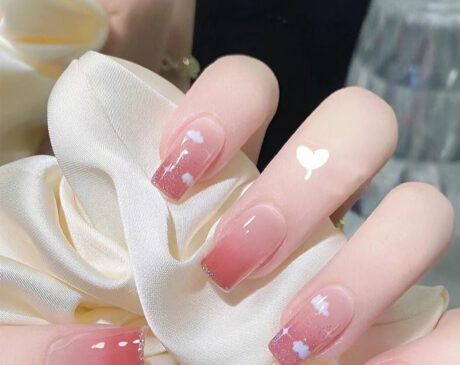What Is the Best Home Remedy for Acrylic Nails?
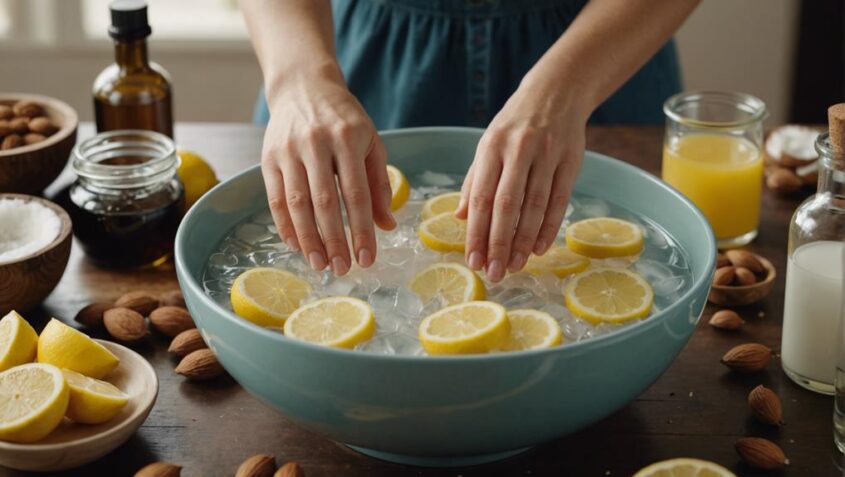
For maintaining healthy acrylic nails at home, consider natural remedies like lemon juice soak for brightening, coconut oil massage for hydration, toothpaste buffing for smoothing, tea tree oil treatment for fungus, and baking soda paste for stains. These cost-effective solutions provide nourishment, protection, and cleansing properties to keep your acrylic nails looking their best. By exploring these remedies, you can enhance the longevity and appearance of your nails while also preventing common issues. Remember, the key to flawless acrylic nails lies in these simple yet effective home remedies.
Key Takeaways
- Lemon Juice Soak for Brightening: Lightens stains and rejuvenates nails with natural acidity.
- Coconut Oil Massage for Hydration: Penetrates nail bed for deep hydration and protection.
- Toothpaste Buffing for Smoothing: Acts as a buffer to polish acrylic nails.
- Tea Tree Oil Treatment for Fungus: Potent antifungal properties to combat infections.
- Baking Soda Paste for Stains: Gently cleans and whitens surfaces effectively.
Reasons for Acrylic Nail Issues
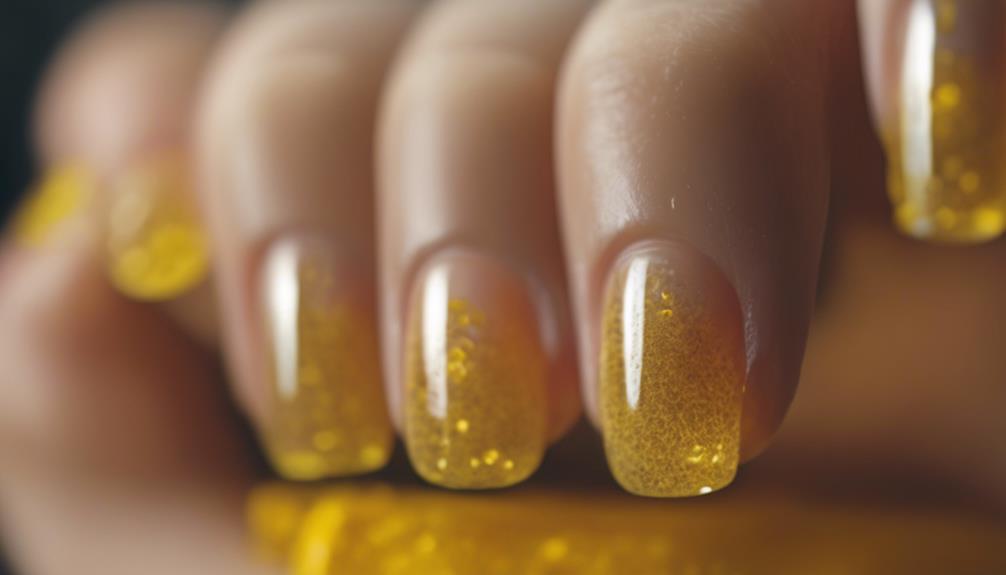
Frequently, the longevity and appearance of acrylic nails can be compromised due to various underlying reasons. One common issue is improper nail preparation before the acrylic application. If the natural nail is not thoroughly cleaned, dehydrated, and primed, the acrylic may not adhere properly, leading to lifting and chipping. Additionally, using low-quality or expired products can result in a subpar acrylic nail finish. It is essential to invest in high-quality acrylic powders, liquids, and primers to ensure a durable and aesthetically pleasing result.
Another reason for acrylic nail problems is inadequate maintenance. Failing to moisturize the cuticles and nail bed regularly can lead to dryness and brittleness, causing the acrylic to crack and break easily. Furthermore, exposing acrylic nails to harsh chemicals without proper protection, such as gloves, can weaken the acrylic and diminish its lifespan.
Understanding these reasons for acrylic nail issues is crucial for maintaining beautiful and long-lasting acrylic nails. By addressing these underlying factors, individuals can enjoy their acrylic enhancements with confidence and style.
Essential Supplies for DIY Remedies
To effectively address common issues with acrylic nails, acquiring the necessary supplies for DIY remedies is key to maintaining their longevity and appearance. Having the right tools at your disposal can make a significant difference in how you care for your acrylic nails. Here are some essential supplies to consider for your at-home nail care kit:
| Supply | Description |
|---|---|
| Acetone | A powerful solvent for removing acrylic nails |
| Nail buffer | Helps smooth out any rough edges or surfaces |
| Cuticle oil | Nourishes and hydrates the nail bed and cuticles |
| Nail brush | Assists in cleaning and exfoliating the nails |
Lemon Juice Soak for Brightening
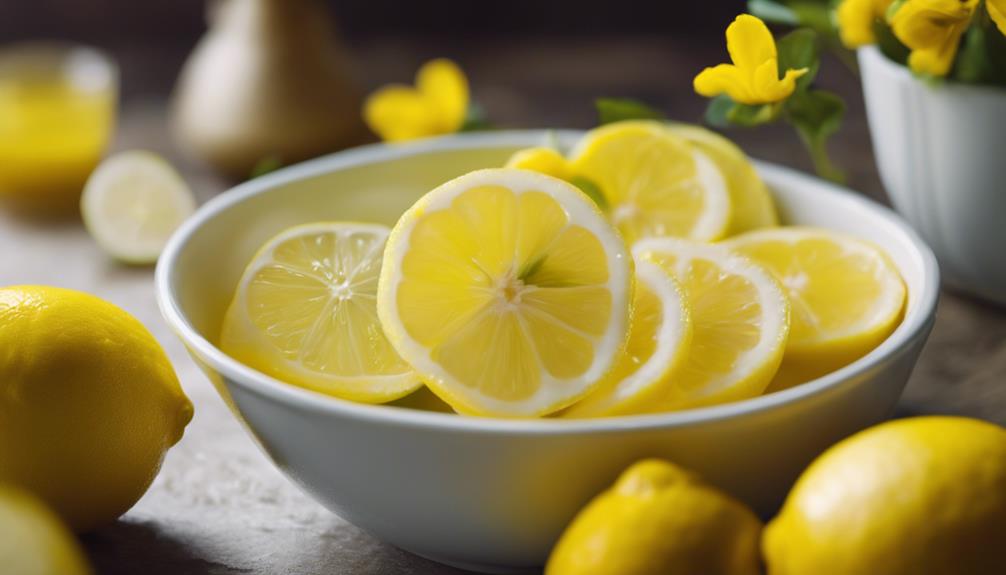
Introducing the benefits of using citrus for nail health and the rejuvenating effects of a DIY lemon juice soak can be instrumental in achieving brighter and healthier-looking acrylic nails. By exploring the natural properties of lemon juice, individuals can discover a cost-effective and simple method to enhance the appearance of their nails without harsh chemicals. Embracing this home remedy not only promotes nail wellness but also offers a refreshing alternative for those seeking a natural approach to nail care.
Citrus for Nail Health
Citrus fruits, known for their natural acidity, can be a beneficial ingredient in improving the health and appearance of acrylic nails, with lemon juice offering a brightening effect when used as a soak. The citric acid in lemon juice helps to lighten stains and brighten the nails, leaving them looking refreshed and rejuvenated. This natural remedy is not only effective but also gentle on the nails, making it a popular choice for those seeking innovative ways to enhance their nail health. Incorporating citrus fruits like lemons into your nail care routine can provide a simple yet effective solution for maintaining vibrant and healthy-looking acrylic nails. Embrace the power of citrus for a fresh and bright nail aesthetic.
DIY Nail Rejuvenation
Enhancing the radiance of acrylic nails can be achieved through a DIY Nail Rejuvenation technique involving a Lemon Juice Soak for Brightening. Lemon juice is renowned for its natural bleaching properties, making it an excellent choice for brightening and rejuvenating dull or stained nails. To create the soak, mix fresh lemon juice with warm water in a bowl and soak your nails for 10-15 minutes. The citric acid in lemon juice helps to lighten stains and brighten the overall appearance of your nails. This rejuvenating treatment not only enhances the aesthetic appeal of your acrylic nails but also promotes nail health by cleansing and refreshing them. Embrace this innovative DIY approach for a simple yet effective nail rejuvenation experience.
Coconut Oil Massage for Hydration
Wondering how to effectively hydrate your acrylic nails? A simple and beneficial method is through a coconut oil massage. Coconut oil is a versatile natural product that can work wonders for your nails. Here are three reasons why a coconut oil massage is the perfect solution for keeping your acrylic nails hydrated and healthy:
- Deep Hydration: Coconut oil is rich in fatty acids that penetrate deep into the nail bed, providing intense hydration and nourishment. This helps prevent dryness and brittleness, keeping your acrylic nails looking lustrous and strong.
- Antifungal Properties: Coconut oil contains antifungal properties that can help protect your nails from fungal infections, which are common in acrylic nail wearers. By massaging coconut oil into your nails regularly, you can maintain a clean and healthy nail environment.
- Cuticle Care: Regularly massaging coconut oil into your cuticles can help soften and moisturize them, promoting healthy nail growth and preventing hangnails. Healthy cuticles are essential for maintaining the overall health and appearance of your acrylic nails.
Toothpaste Buffing for Smoothing
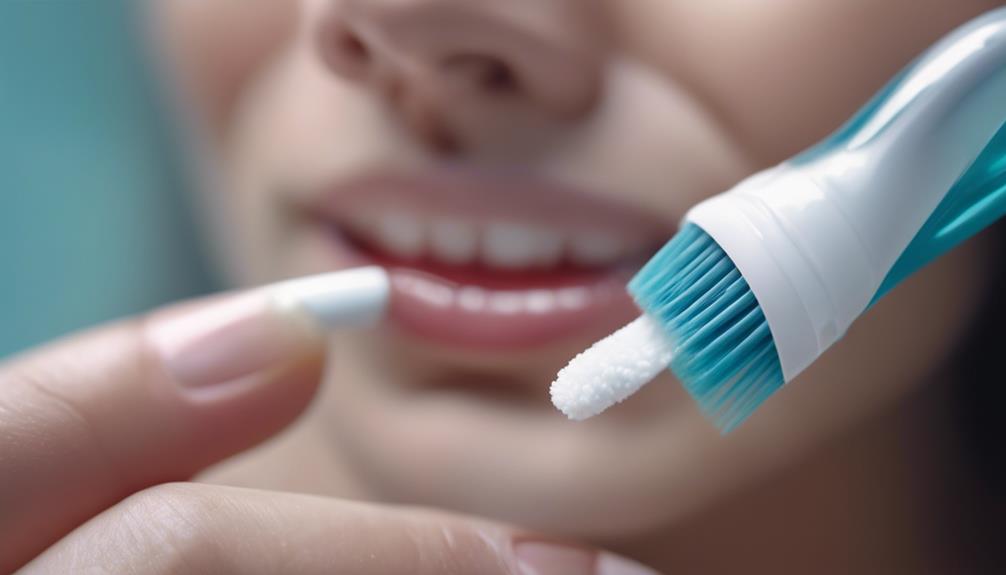
Toothpaste can serve as an effective buffer for acrylic nails, aiding in the process of smoothing out any rough edges or imperfections. This simple technique can be a valuable addition to your DIY nail care routine, providing a cost-effective solution for maintaining smooth and polished acrylic nails. By incorporating toothpaste buffing into your nail care regimen, you can achieve a professional-looking finish from the comfort of your own home.
Toothpaste as Buffer
For a cost-effective and simple approach to achieving a smooth finish on your acrylic nails, consider utilizing toothpaste as a buffer. Toothpaste, a household item, can serve as a gentle abrasive to help smooth out any rough edges or uneven surfaces on your acrylic nails. Here are three reasons why toothpaste can be an effective buffer for your nails:
- Mild Abrasive Properties: Toothpaste contains mild abrasives that can help gently buff away imperfections on acrylic nails.
- Readily Available: Easily accessible in most households, toothpaste offers a convenient solution for nail buffing without the need for specialized products.
- Polishing Effect: Toothpaste can leave a polished finish on acrylic nails, enhancing their overall appearance.
Nail Smoothing Technique
When aiming to achieve a smoother surface on acrylic nails, employing a nail smoothing technique such as toothpaste buffing can effectively refine the texture and appearance of the nails. This innovative method involves using a small amount of toothpaste on a nail buffer or soft cloth to gently polish the surface of the acrylic nails. The mild abrasiveness of the toothpaste helps to smooth out any rough edges or unevenness, resulting in a more polished look. By buffing the nails with toothpaste in gentle circular motions, you can create a smoother finish that enhances the overall appearance of your acrylic nails. This simple yet effective technique offers a cost-efficient way to maintain beautifully smooth nails at home.
DIY Nail Care
Achieving a smoother texture on acrylic nails can be accomplished through a DIY nail care technique known as toothpaste buffing, which involves gently polishing the nails with toothpaste using a nail buffer or soft cloth. Toothpaste is a versatile household item that can work wonders on your nails. Here are three reasons why toothpaste buffing is a game-changer for nail care enthusiasts:
- Natural Ingredients: Toothpaste often contains mild abrasives that can help buff out imperfections on the nail surface.
- Cost-Effective: Using toothpaste for nail buffing is a budget-friendly alternative to expensive salon treatments.
- Convenient: With toothpaste readily available in most households, this DIY nail care method is easily accessible for quick touch-ups.
Tea Tree Oil Treatment for Fungus

Have you ever considered the effectiveness of tea tree oil in treating fungal infections on acrylic nails? Tea tree oil, derived from the leaves of the Melaleuca alternifolia plant, is known for its potent antifungal and antibacterial properties. When it comes to combating fungus on acrylic nails, tea tree oil stands out as a natural and effective remedy.
The application of tea tree oil on affected acrylic nails can help inhibit the growth of fungus and promote healthier nail growth. Its antifungal properties penetrate the nail bed, targeting the infection at its source. To use tea tree oil for fungal treatment, simply dilute a few drops of tea tree oil in a carrier oil like coconut or olive oil, and apply it to the affected nails using a clean cotton swab. Regular application, coupled with proper nail hygiene, can yield positive results in combating fungal infections on acrylic nails.
For those seeking an innovative and natural solution to fungal issues on acrylic nails, tea tree oil offers a promising remedy worth considering.
Baking Soda Paste for Stains
The efficacy of utilizing a baking soda paste for addressing stains on various surfaces has been recognized for its gentle yet effective cleaning properties. Baking soda, a versatile household staple, can be harnessed to tackle stubborn stains effectively. Here are three innovative ways baking soda paste can help combat stains:
- Natural Whitening: Baking soda's mild abrasive nature makes it ideal for lifting stains and whitening surfaces without causing damage.
- Odor Elimination: The alkaline nature of baking soda helps neutralize odors, making it an effective solution for removing tough stains that come with unpleasant smells.
- Gentle on Surfaces: Unlike harsh chemical cleaners, baking soda paste is gentle on various surfaces, making it a safe yet powerful option for stain removal without the risk of damage.
How to Prevent Acrylic Nail Problems
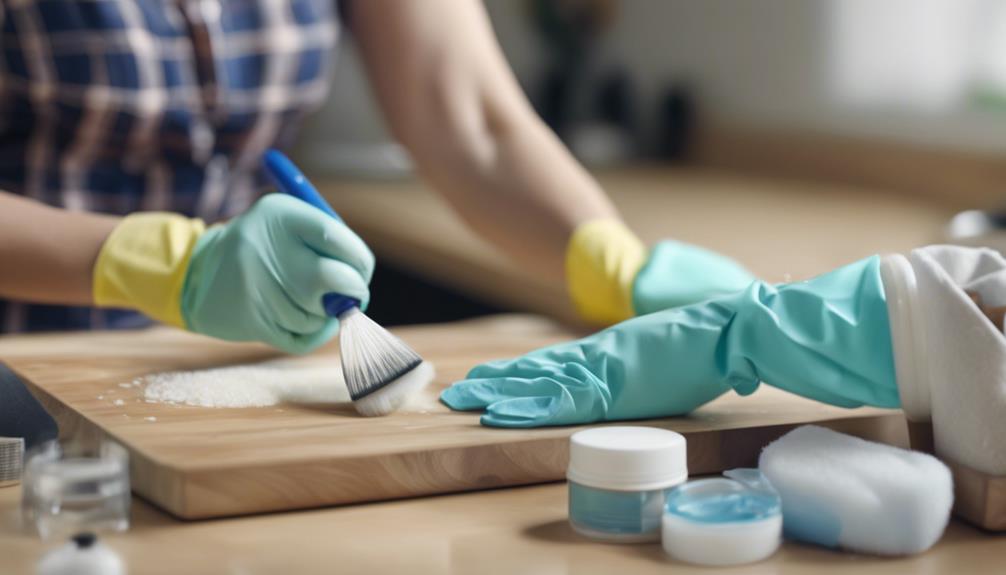
What are the key steps to effectively preventing acrylic nail problems and maintaining healthy nails? To ensure the longevity and health of your acrylic nails, it is essential to follow a few simple guidelines. By incorporating these practices into your nail care routine, you can minimize the risk of common acrylic nail problems such as lifting, breakage, and infections.
One innovative approach to maintaining healthy acrylic nails is to consider the following preventive measures:
| Preventive Measures | Description | Benefits |
|---|---|---|
| Proper Nail Preparation | Thoroughly clean and dehydrate natural nails before application. | Enhances adhesion and reduces the risk of lifting. |
| Regular Maintenance | Schedule routine fills and repairs to prevent nail breakage. | Maintains the integrity and strength of the acrylic. |
| Hydration | Keep nails and cuticles moisturized to prevent dryness. | Reduces the likelihood of infections and breakage. |
| Avoid Harsh Chemicals | Use gentle products and avoid exposing nails to damaging agents. | Preserves the quality and appearance of acrylic nails. |
Frequently Asked Questions
Can Acrylic Nails Cause Allergic Reactions?
Acrylic nails can trigger allergic reactions due to the chemicals in the products, leading to redness, swelling, or itchiness. It's crucial to spot any signs promptly and seek professional advice for proper management and prevention.
Are There Any Natural Remedies for Nail Lifting?
Natural remedies for nail lifting include keeping nails dry, using a gentle nail file to smooth edges, applying tea tree oil or vitamin E, and avoiding harsh chemicals. Consult a dermatologist if the issue persists.
How Long Should I Soak My Nails in Lemon Juice?
Soaking nails in lemon juice can be beneficial for about 10-15 minutes to help brighten nails and cuticles due to its natural acidic properties. Longer soaking times may lead to excessive dryness or damage.
Is Coconut Oil Safe for All Nail Types?
While some may question the compatibility of coconut oil with various nail types, its versatility and nourishing properties make it a safe and effective option for most individuals. Embrace the natural benefits of coconut oil.
Can Tea Tree Oil Be Used for Nail Maintenance?
Tea tree oil is a popular choice for nail maintenance due to its antifungal and antibacterial properties. It can help with nail health and cleanliness but should be used cautiously to avoid skin irritation.

